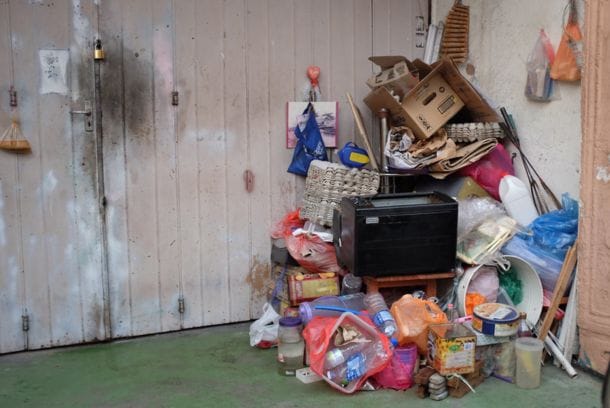Hoarding is a complex psychological disorder that often leads to the accumulation of excessive clutter, making it difficult for individuals to manage their living spaces. If you have a loved one who struggles with hoarding, the process of cleaning their house can be overwhelming, both for them and for you. With a sensitive and strategic approach, you can help them reclaim their space without causing undue stress. Here are some effective steps for tackling hoarder junk removal and providing hoarder cleanup assistance.
Understand the Emotional Challenges of Hoarding
Before diving into the hoarder cleanup process, it’s crucial to understand the emotional connection hoarders have with their belongings. Hoarding is often linked to feelings of anxiety, depression, and the fear of losing control. Items that may seem like junk to others hold immense sentimental value to a hoarder. Approach the situation with empathy and patience, recognizing that this is a mental health challenge and not simply a matter of cleaning.

Start with a Gentle Conversation
Begin by discussing the issue in a supportive, non-judgmental manner. Express your concern for their well-being and the safety hazards that cluttered environments can create. Let them know you’re there to help them with hoarder junk removal, but that you respect their pace and feelings. Hoarders often feel ashamed or embarrassed about their living conditions, so a kind and understanding tone can make all the difference in how receptive they are to your help.
Create a Clear Plan for Hoarder Cleanup
Once the individual is on board with the idea of cleaning, establish a clear plan. Hoarder cleanup is not something that can be done in a day. Break the task down into manageable chunks, tackling one room or area at a time. You may want to start with spaces that will have an immediate impact, such as the kitchen or bathroom, where cleanliness is essential for health and safety.
Sort Items into Categories
A critical part of hoarder junk removal is sorting through the clutter. Use the “three-box method,” where you label boxes as “keep,” “discard,” and “donate.” Working with the hoarder, go through each item to determine its category. Keep in mind that hoarders may struggle to part with items, so offer gentle encouragement but avoid forcing them to make decisions. Sometimes, revisiting items later can make it easier for them to let go.
Hire Professional Hoarder Cleanup Services
In some cases, the sheer volume of junk may be too much for you and the individual to handle alone. This is where professional hoarder junk removal services come in. These experts are trained to deal with extreme clutter and can provide specialized equipment and strategies for effective hoarder cleanup. Hiring a professional service also ensures that hazardous materials are disposed of properly, which can be a significant concern in hoarded homes.
Establish Organizational Systems
As you clear out the clutter, it’s essential to help the hoarder establish organizational systems to prevent future hoarding tendencies. Teach them the importance of having designated spaces for items and how to keep surfaces clear. Introducing shelving, storage bins, or filing systems can help them maintain order. Keeping the space organized is key to preventing a relapse into hoarding behaviors.
Encourage Ongoing Therapy
Hoarding is not something that can be “fixed” with just one cleanup session. To truly help someone struggling with hoarding, encourage them to seek ongoing therapy. Cognitive Behavioral Therapy (CBT) is one of the most effective treatments for hoarding disorder, as it helps individuals address the underlying issues that lead to their excessive collecting. Coupling therapy with regular check-ins can help them maintain a clean and healthy living environment over time.
Support Maintenance of the Clean Space
After the hoarder cleanup is complete, staying involved is important. Periodically visit or check in with the person to see how they’re managing their space. Offer your help if needed, whether it’s organizing new items, handling hoarder junk removal on a smaller scale, or just offering moral support. This ongoing care will show them that they don’t have to face their hoarding tendencies alone.
Celebrate Progress
Cleaning a hoarder’s house is a monumental task, and every bit of progress should be celebrated. Acknowledge the hard work they’ve done and encourage them to feel proud of their efforts. Positive reinforcement can go a long way in helping them sustain the cleanliness and continue to declutter their lives.
Conclusion
Helping a hoarder clean their house requires a combination of empathy, patience, and a structured plan. Through thoughtful conversations, organized hoarder cleanup efforts, and professional assistance when necessary, you can make the process manageable and supportive. Remember, hoarding is a psychological disorder that demands ongoing care and attention. With the right approach, hoarder junk removal can lead to lasting change, helping your loved one enjoy a safer, healthier living environment.
Whether you need professional hoarder junk removal services or ongoing support for hoarder cleanup, there are resources available in your area to assist with this delicate process.
FAQ
What is hoarding, and how does it affect a person?
Hoarding is a psychological disorder where individuals accumulate excessive amounts of belongings, often to the point where their living space becomes unmanageable. This can affect their mental and physical health, relationships, and overall quality of life.
How do I start the hoarder cleanup process?
Start with a gentle conversation. Break down the cleaning process into manageable steps by focusing on one room or area at a time. Use sorting systems like “keep,” “discard,” and “donate” boxes to stay organized.

